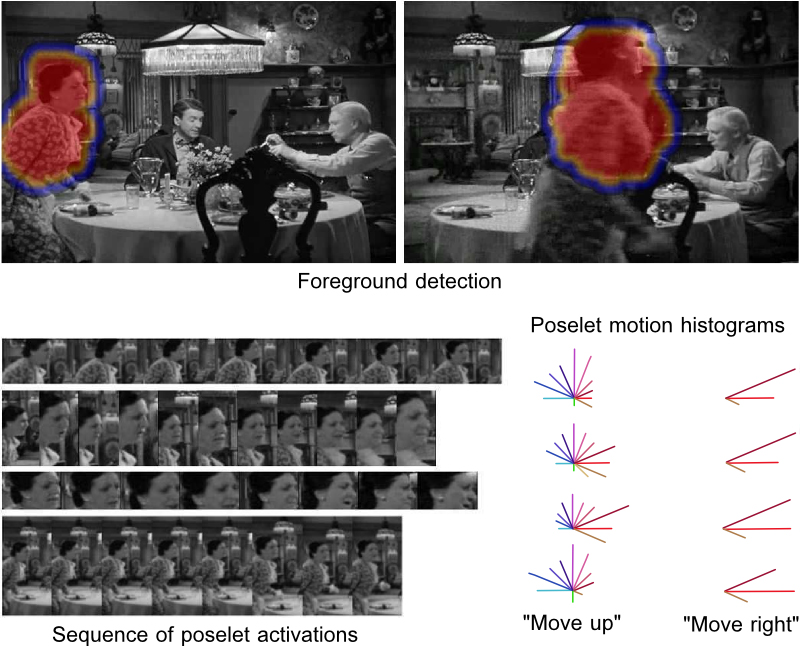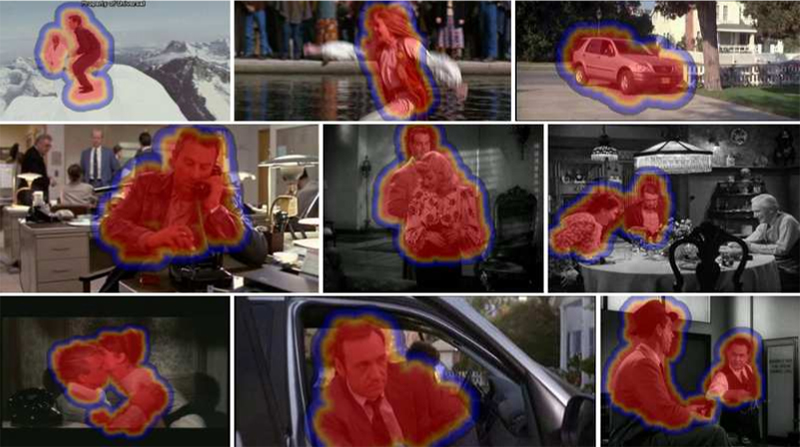Content Based Video Analysis
Human actions can be considered as one of the most important parts of movies and videos. Recognizing these actions correctly is vital for content based video analysis. Typical actions observed in movies are for example »sitting down«, »shaking hands«, »driving«, »kissing«, and many others. Learning realistic actions from videos in unconstrained settings is a challenging task in visual recognition.

